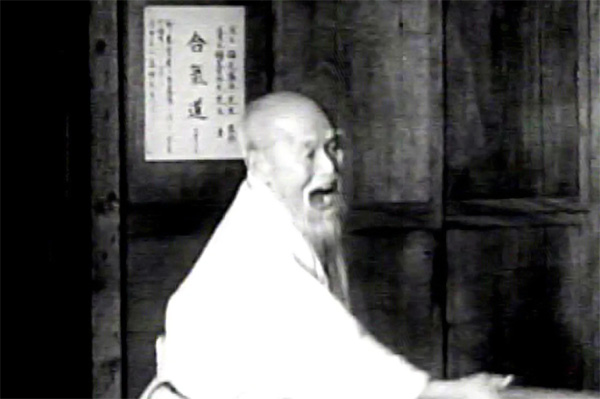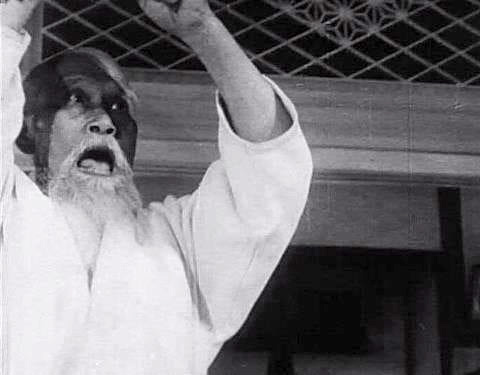
Kiai are an integral part of traditional martial arts, of which Aikido is no exception.
Kiai is an expression of the very essence of Budo.
Kiai is, however, rarely practiced in dojos, mainly because the Americans, who occupied Japan after the war, prohibited martial arts training. The use of kiai would have drawn attention to contempt for such rules. On the other hand, martial arts practitioners in the countryside were much more at ease, which was one of the reasons that led UESHIBA O-Sensei to settle in Iwama.
Kiai and Aiki are two highly debated concepts in the world of Budō. Often attempts at explaining them range from science fiction inferences to true simplifications.
Aiki and Kiai are words formed by the same ideograms – which, contrary to what one might think, given the high number of homophones present in the Japanese language, is not an absolutely obvious fact at all.
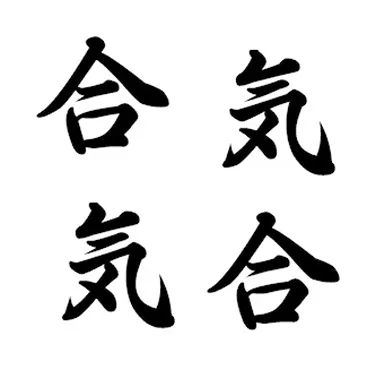
KIAI (氣合)
They constitute one of the numerous pairs Yang/Yin, Omote/Ura, Tatemae/Honme that are a common but not easy to understand facet of Japanese philosophy. They are two distinct aspects of a single reality, "not one, not two", absolutely inseparable.
A basic concept that regulates them is that one "does not work" without the other, it cannot generate itself in the other's absence and, if it loses its complementary opposite, it is immediately destroyed.
Let's briefly analyze KI (氣), which is the core of the two concepts, while AI (合), depending on how it is positioned in the word, defines the "way" in which Ki is expressed.
The word Ki has been given many meanings, and the same meanings have often been misinterpreted. In this essay, we assume its connection with the respiratory act and assert its absolute "naturalness", its regular presence that accompanies us throughout our life. Mochizuki sensei emphasized the meaning of Ki as "Inspiration/Inhalation". This means that both Kiai and Aiki, through breathing, accompany us throughout our existence, flowing in it like the water of a stream.
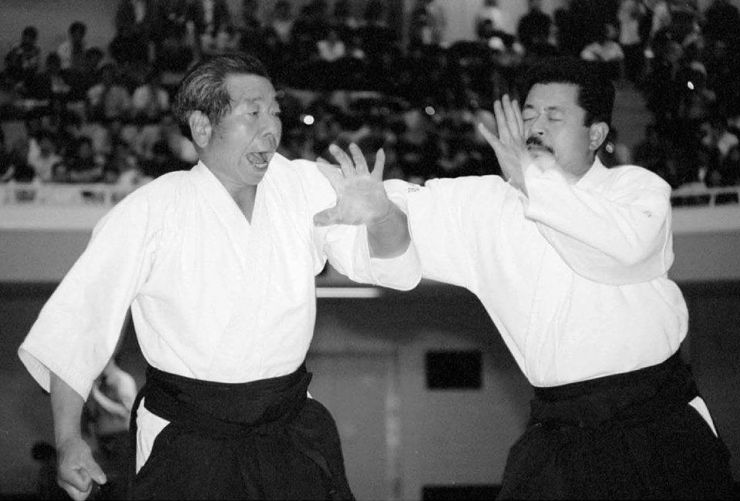
Same goes for Ai, which expresses harmony and affinity. As we said in the context of the two words, Ai refers to Ki and its position explains how the latter manifests itself. In both combinations, Ki is "marked" by Ai so that it constitutes a balanced whole, made up of various elements. They include the environment, the conditions in which we are and act and those that surround us, and more.
In the practical manifestation of KIAI, the action is a direct one. It is not necessarily straight, however, it must in any case "cut" the opponent, his intention, his technique or his position. This action "breaks" or overwhelms the opponent's Ki. This fracture affects position and action together. In nature, it may very well happen as the consequence of an act of "Brute Force" (an excess of force, speed or resistance), but in Martial Arts it must be the result of the "best use of energy", implemented in the greatest possible economy (energy, movement, time).
About Kakegoe
The sound expression of Kiai is called "Kakegoe". It is an aspect of it that is both necessary and not, since Ki-Ai is above all an expression of unity and will in the three elements of body/mind/spirit. This expression can also not be "voiced". However, Kakegoe is important and, in most cases, it is appropriate to express it.
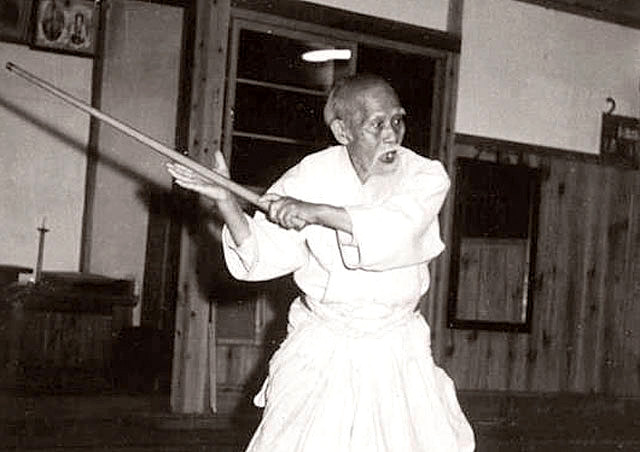
In contemporary Gendai Budō, Kakegoe is in most cases taught correctly as a respiratory action and – less often – also from the mind/spirit point of view, but this is just basic instruction. More in-depth teaching distinguishes the tones and sounds of the Kakegoe according to action and opportunity, tones and sounds that vary according to the type of action that is performed (or that we are receiving) and its composition (single or multiple movements), according to the Taoist laws of the Five Elements .
Since Kakegoe mainly depends on the quality of the mental/spiritual element, it is the expression of the determination that is physically manifested with the propriety of the action itself. This "cry" is not always necessary – sometimes it must be "silent" – but sonorous or not, it is there, otherwise Kiai as an action loses much of its effectiveness. Obviously, even if there is no vocalization, there is still the exhalation, which links or concludes Kiai. That is because Kiai is not, as it sometimes seems, a single event in a single action: a compound technique, with neutralizations and counterattacks, or feints, combinations, or more, can entail more partial Kakegoe up to a final one. This "partial Kiai" uses only two-thirds of the air contained in the lungs. In these multiple actions, it can be observed that there are one or more passages from Kiai to Aiki or vice versa.
KI-AI-KI
We are getting to Aiki, but first we have to complete Kiai. The respiratory rhythm is not like the simple physical breathing, rather a sensitivity that governs our breath in quantity, cadence and quality, according to the perception of those in front of us.
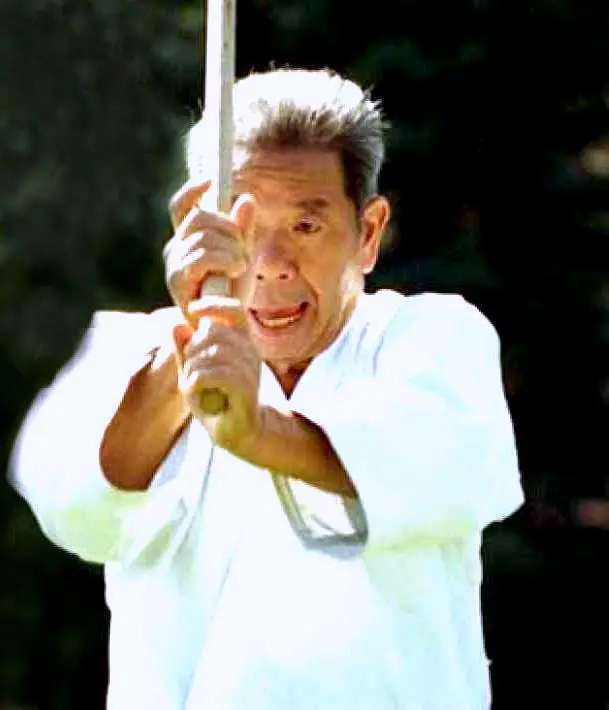
To have Kiai you need to have a centralized and rooted base. Guard and Position express a polarization of energies and possibilities, and this is a first reciprocal relationship with the opponent. Without it, the breathing also fluctuates, our energy is not stable and it is difficult to focus. Movement adds other data to be calculated, and also the direction from which the opponent will lead the attack and the one in which we will act.
The Ki-Inspiration concept is also explained by the fact that our lungs need to be charged when the action switch clicks on. The previous evaluations establish how much energy must be used to overcome that used by the opponent.
Kiai is initiative, the active technique that "cuts". Aiki and Kiai are the heart of the technique that comes from Kenjutsu, from the sword, from the sword that developed Aiki Jutsu. Kiai is the attack, the slash or the first initiative thrust that is launched at the perception of the opponent's moment of "void" (虚 – Kyō , slash and jab that become Irimi and Atemi in Tai Waza. It is also what causes the opponent's balance to break when blades cross (Kuzushi), which in turns becomes Shinoji no Te in empty-hand techniques.
Kiai is action on action according to the three times (before/during/after), taking advantage of the moment of emptiness that exists during the attack action itself. Preventing this void" (Kyō) from happening is very difficult: the body/mind/spirit has to stay "free". Here we enter the domain of "Mental Void" (Muga-Mushin) and continuous circle of action. This circle is a line that comes from a point and rotates (En, 丸). They are difficult to obtain if the practice does not reach the limit and Seme, "Threat" or danger is not present.
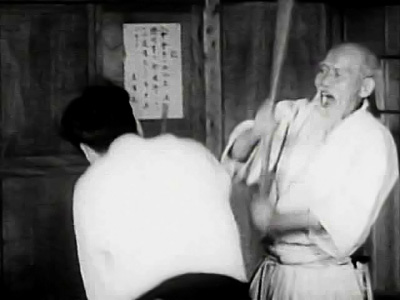
We are still considering the field of action of the swordsman, but this can and must be carried on an equal footing in empty-handed practice. We are in a Kiai/Aiki force field, action passes from one to the other and then returns. It can be born as Kiai, then move on to Aiki and end in Kiai, or start in Aiki and then end in Kiai. However, Aiki alone is not enough and cannot exist.
